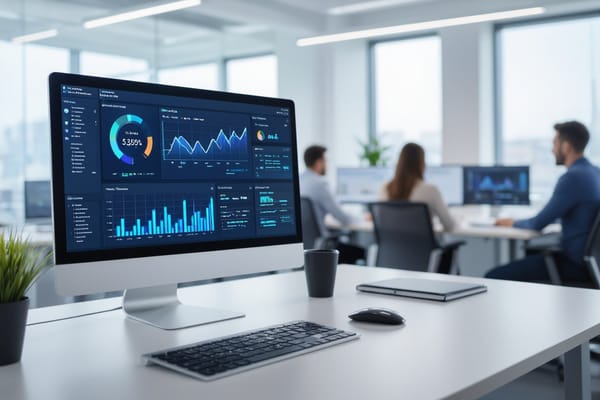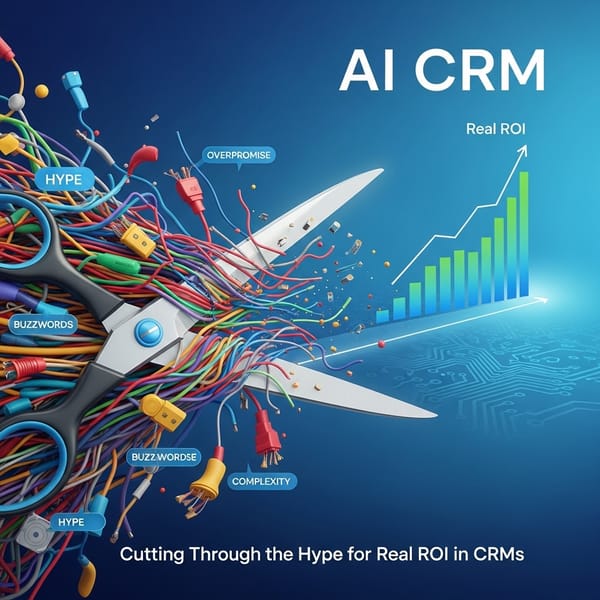How Digital Agencies Use CRM to Scale Client Relationships

Many digital agencies deploy CRM platforms to centralize client data, automate routine tasks, and deliver personalized communications so you can scale without sacrificing service quality. By unifying lead tracking, project workflows, and performance analytics, a CRM helps you prioritize high-value clients, shorten onboarding, and measure campaign impact, enabling data-driven decisions that grow retention and revenue.
Key Takeaways:
- Centralize client data to personalize communications, align team activities, and keep a unified client history for better service delivery.
- Automate onboarding, follow-ups, task assignment, and billing to reduce manual work, ensure consistency, and scale relationship management.
- Leverage CRM analytics and segmentation to measure performance, identify upsell/retention opportunities, and prioritize high-value clients.
Unlocking Client Insights: The Role of Data in CRM
You merge first-party inputs (forms, support tickets), behavioral signals (site visits, email clicks), transactional records (invoices, project milestones) and third-party enrichments into a single CRM timeline so your team sees a 360° client view. That unified dataset feeds lead scores (0–100), cohort segments (often 5–10 priority groups) and automated dashboards that let you prioritize outreach, predict churn risk, and allocate account resources based on measurable signals.
How CRM Gathers and Analyzes Client Data
You stream data via native integrations (GA4, email platforms), middleware (Zapier, Segment) and direct APIs from billing or project tools. Automated ETL processes clean and de-duplicate records, event tracking captures behavioral triggers, and built-in analytics transforms logs into KPIs—conversion rates, time-to-close, average project value—fed into real-time reports and alerts for immediate action.
Transforming Raw Data into Client Understanding
You convert stitched client profiles into actionable intelligence by applying segmentation, propensity scoring and journey analytics; for example, using a 0–100 lead score plus recency/frequency/monetary (RFM) cohorts to trigger personalized nurture sequences and upsell offers that align with client lifecycle stages.
Deeper work involves identity resolution, feature engineering and model validation: you standardize contact fields, derive behavioral features (pages per visit, time since last login), and train simple predictive models (churn probability, CLV over 12 months). Then you operationalize outputs into workflows—automated check-ins for high-churn-probability accounts, premium onboarding for high-CLV prospects—and measure impact with A/B tests and cohort analysis over 3–6 month windows to iterate on messaging and resource allocation.
Personalization at Scale: Tailoring Client Experiences
Using CRM-driven profiles you map behavioral and transactional data to personalize every touchpoint. Segment clients by revenue, service, channel preference and campaign response—targeting the top 20% of clients for VIP offers can lift upsell rates by 18%. Merge tags and dynamic content let you swap messaging per client automatically, cutting manual copy work by over 60% while keeping relevance high.
Leveraging CRM for Customized Communication
Segmenting by lifecycle stage, spend and behavior enables you to deliver the right message on the right channel. Use dynamic templates and merge fields to personalize subject lines and CTAs, and set behavioral triggers for email, SMS or in-app prompts—A/B tests often boost open rates by 10–15 percentage points. Automated nurture sequences for renewals and cross-sells save time and increase conversion predictability.
Creating Client Journeys That Drive Engagement
Map journey stages from discovery to advocacy and assign triggers, delays and conditional paths so you can react to client behavior in real time. Combine onboarding checklists, milestone reminders and quarterly ROI reports into a single journey; one mid-size agency reported a 25% retention lift and 30% faster time-to-value after deploying lifecycle workflows tied to KPIs like NPS and churn risk.
Use a visual journey builder to create branching logic: send a six-email educational drip over three weeks, then trigger a case study email if engagement exceeds 40%. Set wait conditions and hard goals—if a client hasn't logged in within 10 days, escalate to a human follow-up within 48 hours. Tie each path to measurable KPIs (MRR growth, upsell rate, NPS) and use revenue attribution to prove which journeys drive the most lifetime value.

Building Trust Through Consistent Interactions
Your CRM should enforce a predictable cadence: set a 24-hour email SLA, weekly status calls, and monthly performance dashboards so clients always know what to expect. Centralize meeting notes, deliverables, and decision logs to avoid mixed messages, and use personalization tokens to reference past conversations—clients notice when you recall a single detail. Consistent, documented touchpoints reduce scope creep, make your team accountable, and turn ad-hoc check-ins into a measurable retention strategy.
Automation Tools That Enhance Client Communication
Use automated onboarding sequences (for example, five emails over the first 30 days), triggered task reminders, and calendar links to eliminate friction. Chatbots handle FAQs and route complex issues to account owners, while CRM workflows send milestone reports automatically once KPIs update. Integrate with Zapier or native APIs to push lead and project changes into Slack or SMS alerts so nothing waits on a manual handoff.
The Importance of Follow-Ups and Feedback Loops
Schedule structured follow-ups—initial response within 48 hours, a 1-week satisfaction check, and a 90-day strategic review—to capture sentiment while projects are fresh. Automate NPS and short pulse surveys after milestones, then tag responses in the CRM to prioritize accounts with declining scores. Consistent follow-up turns single interactions into an ongoing dialogue that surfaces issues early and creates opportunities for upsell.
Design a concrete follow-up sequence: Day 3 tactical check, Day 14 implementation review, Day 30 ROI report, and Day 90 NPS + strategy session. Track response rate, average resolution time, NPS, and churn risk in dashboards; assign action items from negative feedback immediately to an owner with a 48-hour rectification SLA. Close the loop by logging fixes in the CRM and sending a summary to the client so they see changes and feel heard.

From Leads to Loyalty: The CRM Lifecycle Advantage
Nurturing Prospective Clients into Lifelong Relationships
Use lead scoring, automated drip campaigns, and behavioral segmentation to convert prospects into repeat clients. You can assign scores based on activity (email opens, demo requests, website visits) and trigger a 5‑email nurture over 14 days after a demo; 60% of buyers need five or more touches before committing. Personalize sequences with sector-specific case studies and ARR brackets—one agency raised MQL-to-client conversion 30% by combining score-driven outreach with tailored content.
Strategies for Maintaining Engagement Post-Conversion
Keep momentum through structured onboarding, proactive support, and value-driven communications. You should deliver a 30- to 90-day onboarding roadmap, automate milestone emails (kickoff, training, 30-day check-in), and run quarterly business reviews to surface upsell opportunities. Track NPS and CSAT after key interactions; if NPS falls below 40, set an escalation workflow. Agencies that standardize these touchpoints often reduce churn and increase lifetime value by double-digit percentages.
Design a playbook: day‑0 welcome plus product access, week‑1 technical kickoff with CSM, month‑1 training sessions and success KPIs, then 90‑day QBR tied to measurable ROI. You build a customer health score from usage metrics, support ticket velocity, and payment history; trigger a personalized outreach when the score drops below 40 points. Use CRM automations to schedule renewals 90 days out and to run A/B tests on messaging—small tweaks to timing and content often lift renewal rates by 5–15%.
The Future of Client Management: Emerging Trends in CRM
Integrating AI and Machine Learning for Enhanced Client Intelligence
You can deploy AI-driven predictive scoring to surface high-value clients; agencies using ML report 15–25% lower churn and 10–20% higher upsell rates. Supervised models classify churn risk, unsupervised clustering reveals micro-segments, and NLP on support tickets uncovers product gaps. Tie model outputs into your CRM to trigger automated nurture sequences, dynamic pricing tests, and A/B content personalization based on real-time signals.
The Shift Towards Omnichannel Client Engagement
Your CRM should unify identities across email, SMS, social, chat, and in-app touchpoints to create seamless journeys. Omnichannel customers often deliver ~30% higher lifetime value; linking a CDP with real-time event streams eliminates duplicate messages and enables orchestration. Use APIs to route WhatsApp, Messenger, and live chat to account owners, and embed channel-specific KPIs in client dashboards for clearer reporting.
Practical steps include identity resolution to merge device IDs into a single profile, a message orchestrator to prioritize channels, and analytics to attribute touchpoints. For example, trigger an abandoned-cart SMS within one hour, follow with an email at 24 hours, then escalate to a sales rep if inactive—agencies running such flows report 10–15% lift in recoveries. Maintain consent flags and sub‑minute data latency for relevance.
Conclusion
Considering all points, you can leverage CRM to automate workflows, centralize client data, and deliver personalized campaigns that scale relationship management; by tracking lifecycle metrics, orchestrating timely touchpoints, enabling cross-team collaboration, and exposing upsell opportunities, your agency strengthens retention, increases lifetime value, and makes growth predictable and measurable.
FAQ
Q: How do digital agencies use CRM systems to centralize client data and deliver more personalized service?
A: Agencies consolidate contact details, communication history, contracts, project milestones, billing records, and campaign performance inside the CRM so every team member sees a single client profile. They create custom fields and tags for industry, services purchased, decision-makers, renewal dates, and previous touchpoints. That data enables segmentation and dynamic personalization—automated email templates that reference recent deliverables, proposal workflows that pull in client-specific pricing, and account plans tailored to each client’s goals. Integrated activity feeds (calls, meetings, support tickets) and document storage reduce duplication and speed response times, making outreach and reporting consistently relevant to each client’s context.
Q: What automations and workflows do agencies implement in CRMs to scale client relationships without increasing headcount?
A: Agencies build automations for onboarding sequences, milestone notifications, task assignments, invoice reminders, and NPS/satisfaction surveys. Lead scoring and routing funnels qualify prospects and assign the right salesperson or project manager automatically. Playbooks and templated sequences handle routine outreach (proposal follow-ups, campaign check-ins, renewal reminders), while triggers create tickets for churn-risk behaviors or missed SLAs. Integrations with project management, billing, marketing automation, and chat tools ensure handoffs between sales, delivery, and support are seamless, so higher volume is handled through repeatable automated steps rather than manual effort.
Q: How do agencies use CRM analytics to measure performance, predict growth opportunities, and reduce churn?
A: CRMs provide dashboards and reports for pipeline velocity, conversion rates, average deal size, client lifetime value (LTV), and churn rate. Agencies track campaign ROI, time-to-first-value, and account expansion metrics to spot trends and prioritize high-opportunity accounts. Predictive scoring models combine usage, engagement, billing, and support data to flag upsell prospects or at-risk clients for proactive outreach. Regular cohort and retention analyses guide service improvements; A/B tests of messaging and pricing are tracked in the CRM to quantify what increases renewals and revenue per client.





